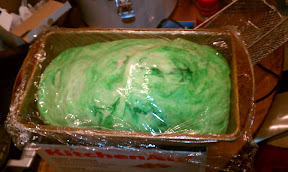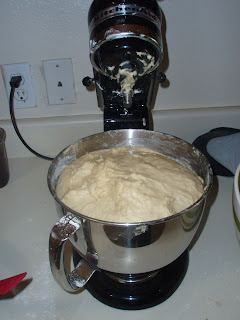Think about what you buy the most frequently when going out to eat.
Most people spend way too much of their food AND entertainment budgets on going out to eat. Yes, eating out is fast, convenient and a fun way to get your grub on from time to time. However, but it also can be expensive, over-portioned and unhealthy. Let’s not also forget the loss of sharing a meal together as a family. Snarfing down McDonalds in the SUV during rush hour is not considered a sharing a family meal.
There are boo-koos of data that suggest that families who share meals together even a few times a week are healthier not just physically, but mentally as well. Children learn important messages about food choices and preparation, in addition to culture and family values around the family table.
According to multiple studies conducted by Marla Eisenberg and crew at the Center for Adolescent Health and Development, it was found that children and teens that share family meals are less likely to have problem behaviors, eating disorders, low self esteem, and risk-taking behaviors such as smoking, drug use, and suicidal actions. There is even evidence that shows family meals will delay the onset of sexual behaviors in teens. All of these have long ranging socio-economic impacts. Who knew that sitting around the table just a few times a week could have such a big impact!?! So let’s get started on the track to pulling away from the drive thru and parking it the dining room. Your kids and your pocket book will thank you…probably the pocket book before the kids, but they’ll come around, eventually. ;-)
First things first, sit down with a notepad and a pen and write down the food your family eats out the most. The items on your list are the first items that you need to start learning to prepare at home. Of course, whatever you learn to make at home is never going to taste exactly like the store bought kind. However, you might be pleasantly surprised, once you get the hang of making it, that your version tastes better or is more satisfying. In the end, remember you will be much happier when you have more green in the bank than you will from the short-lived pleasure derived from a fast, store bought meal.
Now let’s be realistic. Everyone knows they can just stop buying fast food and eat at home. You can get that advice at any website you Google. I am going to be a little more realistic here because changing a habit like this can be tough. So, let’s get started.
First things first, look for items that can be purchased as a whole unit at the grocery store and prepared at home. The easiest example is pizza. My husband and I ordered pizza out nearly every single Friday. This would cost us anywhere from $10-$15 after delivery fee and tip each week. Now, we buy several week’s worth of the good quality, frozen pizzas at the grocery store that are between $5 and $6 a piece. Our savings are around $16-$20 a month. Doesn’t sound like much, but that is almost $250 a year. That’s a car payment. Not only are we saving that money, the frozen pizza cooks faster than the time it took for the delivery guy to get our order to us. Yes! If you just can’t give up your favorite chain pizza, consider picking it up instead of having it delivered. If it is on the way home from the office or near where you pick your kids up from school/practice, you can save yourself several dollars in deliver fees and tips. This step can be a bridge to the cooking at home step.
Let’s look at more “meal-like” store bought foods. One frequent fast meal is a bucket of fried chicken with all the fixin’s. You’re trying to give your family a real “sit down” meal, but you don’t have time to fry a whole chicken, let alone make sides, rolls, and dessert. That’s okay; we can work on this, too. Consider buying only the main course (i.e. the bucket of chicken) and supplement it by making the sides at home. Mashed potatoes will take around 20 minutes, and you can pop open a can of veggies (or use frozen) and have the sides in no time. There are also frozen, bagged biscuits or biscuits in the can that you can make instead, saving even more money. We were a KFC family, so I am going to pick on them a bit. KFC’s sides $2.50 each. Two cans of veggies cost less than one prepared KFC side! All that you would have to do is open the can/bag, pour into a bowl, pop in the microwave, and serve. Prepared foods are almost always going to be more costly that unprepared foods. In addition, they are going to contain more unpleasant things like fat, trans fat, oil, MSG, salt, preservatives, etc. than your home cooked varieties. Not to mention, they will taste less fresh. Who knows how long those mashed potatoes have been sitting under that warmer…and how many hands have been messing with them?
Let’s do one more. How about sub sandwiches? You go to the deli with the kids, Jenny wants a bologna, Timmy wants a ham, Dad wants roast beef, and you want a turkey. Instead of buying everyone a sub, consider having a “build your own sub” night at home. Chain grocers are have a larger selection of breads that are more sub like than your boring old sliced variety, and lunch meats are pretty reasonable. For example, I know Wal-mart sells Bolillos, which are about the size of a 6” sub, 4 for $1. That’s already cheaper than one store bought sub sandwich. Now, I’m not going to lie, buying 3-4 varieties of lunch meat with 1-2 blocks of cheese at once is going to be a bigger upfront cost, but there will be so much more meat/cheese that you will be able to make quite a few sandwiches over the long haul for less. Pick one bag of chips for this week, rotating among family favorites each time. Or, you can buy variety packs so everyone has a single size of their favorite type. This is a great meal for kids because it gives them choices and control over their food. Get a large platter and put a several choices of meats, cheese, and veg (lettuce/tomato/pickle etc.) on it. Bring out a few bottles of spreads, mayo, mustards, ketchup, and some unusuals for a more grown up taste: pesto, vinaigrettes, salsa, bbq sauce. Give everybody their bun and let them go to town, experimenting with new flavors (or sticking with their favorites.) There are no wrong combinations as long as everyone is eating, in my opinion anyway. As a kid, my brother would eat a mayo, bologna, cheese, and applesauce sandwich pretty regularly. The fun was that we ate together as a family, and laughed at each other’s wacky combinations. My favorite was a PBJ with Cheetos (in the sandwich) dipped in milk. To this day, still one of my favorites. This can be a weekly ritual: Wacky Sandwich Wednesday. Eating at home is all about building a meaningful ritual, no matter how small. Things to stay away from:
•
Don’t Offer Too Many Choices: Kids, especially younger ones, don’t need a huge selection of 50 meats, cheeses and dressings. Start initially with flavors they are comfortable with and then substitute in more exotic choices once the ritual is established. Three meats, 1 cheese, 3 spreads and veg are more than enough choices for little ones.
•
Buy Blocks of Cheese, Not Pre-sliced Cheeses: Remember, the more processed the final product, the more it will cost. You can buy a large block, slice it all at once, freeze what you can’t eat in a reasonable amount of time, pulling out the amounts you will use as needed.
•
Meats: Pay attention to weights and packaging. A bigger package does not necessarily mean more meat. The more packaging usually means higher costs. Sometimes you can catch the sales on meats/cheese and make out like a bandit. Sometimes, the deli department overbuys, or have small packages they mark down to finish off a hunk in order to open a new one. (Kind of like scraps at fabric store). Fresh cut stuff will need to be eaten more quickly, but if you are at the store tonight, see meat on sale that will need to be eaten by the end of the week, and sandwich night is tomorrow…get it! Same is true for breads and deli rolls.
•
Rules: Making wacky sandwiches can be fun, but lay down one rule before you start and make sure everyone (meaning the kids) can repeat it and understand: “We want everyone to have fun tonight but there is one rule: You are free to make your wacky sandwich, but you must eat whatever you make.” Like I said before, my bro at the mayo, bologna, cheese, and applesauce sandwich. If your little one wants to make that, but you already know they hate applesauce, remind them of that and the consequences of having to finish their entire sandwich if they don’t like a particular topping.
Are you making any changes you that you have read about? What did you do, how much did you save, and what did you learn? Tell me about it in the comments!
Next in the “Get More Bang for Your Food Budget Buck” Series:
Menu Planning and Plan Ahead Prep
































